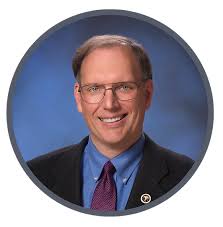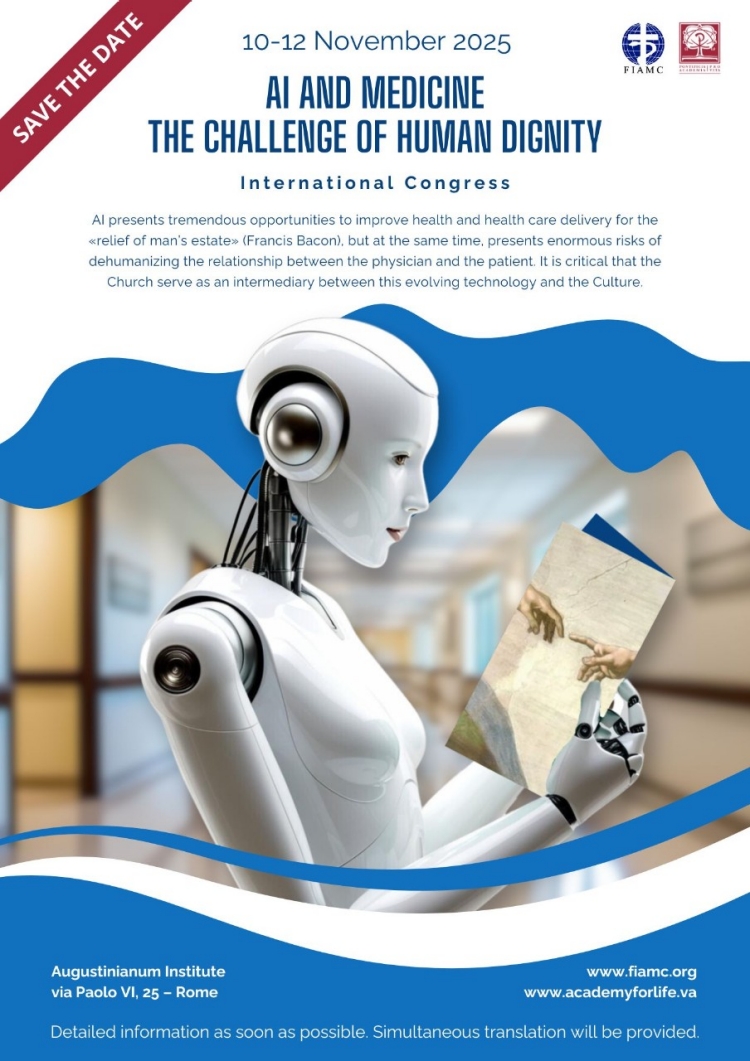Resisting Physician-Assisted Suicide
On December 31, 2009, the Montana Supreme Court of the United States released its decision in Baxter v. Montana (1). The case involved a 76-year-old truck driver with chronic lymphocytic leukemia who, along with four physicians, requested the Court to declare physician-assisted suicide a Constitutional right. The Court sidestepped that question but did declare that if a physician were charged with assisting in a suicide, that physician could use the defense of patient consent. Even though I had signed on to an amicus brief opposing physician-assisted suicide in this case, little did I realize I would still be fighting this battle sixteen years later.
In 2011, I was making hospital rounds and walked into DW’s room to examine her. She was a 73-year-old woman who had been admitted the prior night through the Emergency Room with severe right back, shoulder, and arm pain. Her chronic pain had markedly worsened over the previous few weeks. She had had an old right rotator cuff tear and the MRI of her cervical spine showed multi-level degenerative disc disease and cervical spondylosis without disc herniation. Intolerant to many pain medications, she was in agony that morning. DW was a retired RN (Registered Nurse) who was knowledgeable about medicine. After I had examined her and explained my treatment plan, she asked me if I would help her commit suicide. Taken aback, this was the first time I had ever been directly asked to help kill someone. I felt a sense of dismay. DW denied that she was depressed but stated she would rather die than live with the pain.
I sat down next to DW, and we had a long discussion about PAS and how I was optimistic we could reduce her pain. We touched on her Lutheran faith, but it seemed it did not play much of a role in her life or in her decision to want to end it. I explained I would accompany her every step on her journey as her physician, but ethically, I would not be able to help her end her life. With medications and time, her myofascial pain was better controlled, and she was subsequently discharged from the hospital.
Two months later, I was caring for another patient in a nursing home. MJ was an elderly man with severe Alzheimer’s dementia. His son, who was his power of attorney and could make medical decisions on behalf of his father, called to ask if I could “do that physician-assisted suicide thing to my dad now that it is legal in Montana.” Again, I explained that it was unethical to do that, it was not legal in Montana, and it would be homicide (involuntary euthanasia) to physically give the lethal dose of drugs to his father since his father could not feed himself.
I have often reflected on those requests. Quite frankly, I was stunned that a retired nurse, of all people, would ask me to help her kill herself. The son’s request for MJ opened my eyes to the potential for abuse by family members (and physicians) once that line in the sand was crossed. There are boundaries in medicine for very good reasons. Boundaries that should never be ignored because they lead to a deterioration of the physician’s ethical and spiritual core. Isn’t that what happened to the German physicians involved with the Third Reich?
History
The United States and Canada have, unfortunately, endured a rash of court decisions and referendums in the past 25 years attempting to legitimize PAS. In 1997, the US Supreme Court ruled in Vacco v. Quill that laws criminalizing PAS were not unconstitutional (2). One might think that would be a positive ruling but in effect, that ruling declared that PAS is a states’ rights issue. Of course, different states had different opinions. In 1994, Oregon became the first state in the US to approve PAS (3), which then went into effect under the 1997 Supreme Court decision. Over time, we have witnessed Oregon’s supposed “safeguards” weakened, failure to adequately assess patients for depression, and an expansion of those who can request PAS from the state’s citizens to visitors from out of state. Now, there are attempts to shorten the waiting period from 15 days to 48 hours and expand the prescribers from physicians to non-physicians (nurse practitioners and physician assistants) to write for lethal medications (4).
From those initial battles in Oregon and following the 1997 US Supreme Court decision, the status as of March 2025 is that 10 states have passed laws allowing PAS, 12 states have new laws against PAS, 26 states have pre-1997 bans on PAS still in effect, 1 state has a court decision that may allow a physician’s defense of consent against PAS (Montana), and 2 states have no clear policy (5). Every year, new bills are proposed by advocates of PAS to try to overturn the current bans. As a result, there are ongoing legislative battles across 17 states to legalize or expand PAS. Montana is seeking to restrict it.
Canada is in a worse predicament. Medical Assistance in Dying (MAiD), a euphemism for Physician-Assisted Suicide, is supported by the Canadian government and is the world’s fastest-growing assisted dying program (6). In 2015 in Carter v. Canada, the Canadian Supreme Court decriminalized euthanasia (7). The stated plan was that the use of MAiD would be rare; instead, it has become routine. It is uncommon now for patients to be turned down when they request MAiD (3.5% of all requests) (8). In 2023, over 15,000 deaths occurred due to MAiD: an astonishing 1 in 20 deaths in Canada. That is roughly equal to the number of cerebrovascular deaths in that country. It is anticipated that the number of MAiD deaths will continue to increase each year as the eligibility for those who apply continues to broaden. Eligibility will soon include persons whose death is not reasonably foreseeable and those with mental illness (approved by the Canadian government to start in 2027) (9). Other calls include those with serious physical disabilities, “mature minors” (a legal status referring to persons under age 18 who are determined to be sufficiently mature to understand the consequences of medical decisions), autism, and infants with severe disabilities.
North America is not alone in being affected by calls for physician-administered death. In addition to Canada, active euthanasia is legal under certain circumstances in 10 other countries: Australia, Belgium, Colombia, Ecuador, Luxembourg, the Netherlands, New Zealand, Portugal, and Spain (10). The good news is that the vast majority of countries do not permit Assisted Dying. The bad news is that there has been a decade-long shift in momentum to change that.
As Catholic physicians, we understand the dignity and sanctity of each human life. We understand St. Pope John Paul II’s words in Evangelium Vitae when he wrote “No circumstance, no purpose, no law whatsoever can ever make licit an at which is intrinsically illicit, since it is contrary to the law of God which is written in every human heart, knowable by reason itself, and proclaimed by the Church.” (11) But what about those who are non-religious? What about those who belong to a different faith? How do we convince them?
In the United States, through trial and error, we have discovered that making an argument from one’s religious faith regularly does not succeed. Rather, more logic-based arguments are required as we attempt to reason with our fellow citizens about the pitfalls of PAS. I would argue there are three broad classes of logic-based cases to be made: Bioethics, Impact on Physician Relationships, and Legal/Societal Risks.
Bioethics
A variety of ethical arguments can be raised in opposition to PAS. Many excellent bioethicists have written papers and articles laying out those arguments. Historically, the profession of medicine was grounded in the Hippocratic Oath for 2400 years. Even physicians in modern times, though they may not take the Oath, generally abide by the promise “I will neither give a deadly drug to anybody who asked for it, nor will I make a suggestion to this effect.” In modern times, the US American Medical Association Code of Ethics Opinion E-5.7 states, “Physician-assisted suicide is fundamentally incompatible with the physician’s role as healer, would be difficult or impossible to control, and would pose serious societal risks.” (12) It has almost the exact wording in Opinion E-5.8 about euthanasia. Such stances rightly cause us to ponder the purpose of our profession. As Catholics, we see our profession as recognizing the human dignity in each individual and that by treating them, we express love for our neighbor and for Christ. This is why we do what we do. A secular answer to our purpose is to restore health and prevent disease. What we never do is eliminate the patient’s suffering by eliminating the sufferer.
At a legislative hearing in Montana on March 19, 2025, a Protestant Chaplain and Co-chair of a hospital ethics committee testified in favor of PAS. He argued that the patient’s autonomy is most important and overshadows the other core principles of ethics (justice, beneficence, and non-maleficence). However, if one asserts that autonomy alone is the major determinant of ethical action, or if it prevails over the other three principles, then that is akin to saying that whatever I decide is acceptable is suddenly moral. This is similar to the infamous passage by Supreme Court Justice Anthony Kennedy in Casey v. Planned Parenthood: “At the heart of liberty is the right to define one’s own concept of existence, of meaning, of the universe, and of the mystery of human life.” (13) Could this misunderstanding of autonomy be at the root of confusion about PAS?
Let’s be clear about something else. The majority of requests for PAS do not relate to pain (14). Rather, psychological reasons predominate such as feelings of being a burden, grief, anxiety, and loss of independence. Nevertheless, proponents of PAS most commonly cite uncontrolled pain as an alleged reason for PAS necessity. Rarely have PAS proponents mentioned the success of palliative sedation. Hospice physicians have used palliative sedation many times as a way of relieving the pain and distress inherent to a terminal illness without an intent to end life.
Other arguments to be made can be the question of inadequate care, the slippery slope, and the failure to protect the most vulnerable. For example, is there a disincentive to fully assess a patient for treatable depression when prescribing PAS drugs is so easy? This has been documented by Oregon physician Dr. Charles Bentz, where his patient was clinically depressed, but a specialist still prescribed secobarbital (15). Will legalized PAS lead to euthanasia as we have seen in the Netherlands? Will we fail to protect our most vulnerable patients, as can be seen in the Netherlands’ Groningen Protocol that permits euthanasia in malformed newborns and children with cerebral palsy? What about the ever-expanding criteria to be eligible for MAiD in Canada?
Relationships
Physician-assisted suicide undermines the doctor-patient relationship. Many new elderly patients want to know if I am one of those doctors who “help patients kill themselves”. I explain that I am not and they breathe a sigh of relief. Trust is established where it was in question before. But PAS in society affects more than just the doctor-patient relationship, it can affect the relationship between me as a primary care physician and my specialist colleagues. If I refer a patient to a specialist, can I trust that specialist not to encourage my patient to pursue PAS? Can I trust that specialist not to refer my patient to another physician who does PAS if the medical/surgical options fail? Will I need to start asking my specialist colleagues for their views on PAS before I make a referral?
We have seen the slogan of “right to die” become a “duty to die”. Third-party payers or family members may coerce patients into proceeding with PAS. In 2008, Barbara Wagner was denied the expensive chemotherapeutic drug Tarceva by the state-sponsored Oregon Health Plan for her cancer. She was instead offered coverage for PAS drugs at minimal cost (16). It would appear that the state considers it cheaper for patients to commit suicide than to treat their disease. What message do patients receive when this occurs? Similarly, the question of elder abuse by opportunistic family members or friends has been raised multiple times in Oregon. When the acts of suicide are never witnessed, can one be assured there was no coercion involved?
Society/Legal
Finally, a variety of legal and societal risks make PAS challenging and detrimental. The state of Montana had the highest rate of suicide in the United States in 2022 according to the Centers for Disease Control and Prevention statistics (17). That follows on decades of similar statistics. What signal does it send to our citizens when we are adamant about preventing suicide on the one hand, but simultaneously argue that physician-assisted suicide is acceptable and even a right?
Demographically, we cannot get accurate statistics on the number of PAS deaths. The state of Oregon by law requires physicians to lie on the death certificate and omit PAS as the immediate cause of death (18). Physicians from Montana have testified at legislative hearings that they also routinely fail to note physician-assisted suicide as the actual cause of death. They argue that the underlying disease (e.g. cancer, amyotrophic lateral sclerosis, Parkinson’s) is really what the patient died of, not the toxic dose of drugs they took right before they died. This failure to obtain accurate numbers creates a cloud of secrecy about what is taking place.
In medicine, we are trained to heal patients. For good reason, we are not trained to assist patients in killing themselves. Hospitals and Medical Boards typically credential or certify us in our specialty. Based on what training, experience, or competencies would we determine if a physician should be permitted to help a patient kill themself? Would doctors be required to take a course or fellowship in causing death? Would they need to document “X” number of witnessed PAS deaths as is done with other procedures? David Pruitt was a man in Oregon with lung cancer who obtained a lethal prescription from his physician. He took the entire amount, slept for 65 hours, and then woke up saying, “What the hell happened? Why am I not dead?” (19) He chose not to proceed with PAS and died naturally 2 weeks later. Would this be considered malpractice? Could the patient legally sue the doctor for failing to die?
Conclusion
Many legitimate arguments can be made against PAS. The real question of which argument to use hinges on knowing your audience and the counterarguments they will use. Often, you just have 2-3 minutes to support life or to speak to rebut a PAS-advocating testimony at a state legislature. Groups like Compassion and Choices (formerly the Hemlock Society) constantly try to overturn the bans on PAS in the United States. As a result, it is a continually shifting landscape. Such skirmishes are fought multiple times throughout the year at different state legislatures. We in North America are fortunate to have groups such as the Euthanasia Prevention Coalition and Patient Rights Action Fund support us in our efforts.
My patient, DW, who asked me to help her commit suicide, died last year. We had many good conversations but she never changed her position on PAS. Since that initial conversation in my career, other patients have also asked me about PAS. To my knowledge, none of them ever proceeded PAS under another physician. Despite all I have written, it may not be a logical argument that changes the mind of someone in favor of PAS. Rather, it may be engaging them in conversation, treating them with empathy, and praying for them. Emphasizing that I, the physician, will not abandon them in their distress is essential to their peace of mind, just as knowing our Lord will never abandon us is essential to our peace of mind as well.
References
- Robert Baxter v State. Justia Law. https://law.justia.com/cases/montana/supreme-court/2009/50c59956-3100-468d-b397-4ab38f6eda4d.html
- Content Team. Vacco v. Quill – Case Summary and Case Brief. Legal Dictionary. Published April 2019. https://legaldictionary.net/vacco-v-quill/
- Childress S. The Evolution of America’s Right-to-Die Movement. FRONTLINE. Published November 13, 2012. https://www.pbs.org/wgbh/frontline/article/the-evolution-of-americas-right-to-die-movement/
- Wolfgang L. Oregon bill would allow non-physicians to commit assisted suicide. Live Action News. Published February 18, 2025. https://www.liveaction.org/news/oregon-bill-non-physicians-assisted-suicide/
- Map: Assisted Suicide in the States | Charlotte Lozier Institute. Lozierinstitute.org. Published June 13, 2019. https://lozierinstitute.org/map-assisted-suicide-in-the-states/
- Jarvis N. Canada’s assisted suicide program fastest growing in the world. Tnc.news. Published August 13, 2024. https://tnc.news/2024/08/13/canadas-assisted-suicide-fastest-world/
- Butler M, Tiedemann M. Carter v. Canada: The Supreme Court of Canada’s Decision on Assisted Dying.; 2015. https://lop.parl.ca/staticfiles/PublicWebsite/Home/ResearchPublications/BackgroundPapers/PDF/2015-47-e.pdf
- Canada H. Fifth Annual Report on Medical Assistance in Dying in Canada, 2023 – Canada.ca. Canada.ca. Published 2023. https://www.canada.ca/en/health-canada/services/publications/health-system-services/annual-report-medical-assistance-dying-2023.html#t2.1a
- Government of Canada. Medical assistance in dying. www.canada.ca. Published June 16, 2016. https://www.canada.ca/en/health-canada/services/health-services-benefits/medical-assistance-dying.html
- World Population Review. Where Is Euthanasia Legal 2020. worldpopulationreview.com. Published 2024. https://worldpopulationreview.com/country-rankings/where-is-euthanasia-legal
- Pope John Paul II. Evangelium Vitae. www.vatican.va. Published March 25, 1995. 62. https://www.vatican.va/content/john-paul-ii/en/encyclicals/documents/hf_jp-ii_enc_25031995_evangelium-vitae.html
- American Medical Association. CHAPTER 5: OPINIONS on CARING for PATIENTS at the END of LIFE.; 2016. https://www.ama-assn.org/system/files/2019-06/code-of-medical-ethics-chapter-5.pdf
- Justia. Planned Parenthood of Southeastern Pa. v. Casey, 505 U.S. 833 (1992). [851] Justia Law. Published 2019. https://supreme.justia.com/cases/federal/us/505/833/
- McCarthy M. Oregon Death with Dignity Act. The Lancet. 2024;342(8886-8887):1543-1544. doi:https://doi.org/10.1016/s0140-6736(05)80102-3
- Don’t Follow Oregon’s Lead: Say No to Assisted Suicide. https://dredf.org/wp-content/uploads/2012/08/Charles-Bentz-M-D-Hawaii-Reporter-2009.pdf
- McGeehan P. Your life costs too much. The Journal. Published October 12, 2024. https://www.journal-news.net/journal-news/your-life-costs-too-much/article_bf97204f-1dc5-5bbb-8019-00f9729dc8b9.html
- CDC. Suicide Rates by State. Suicide Prevention. Published May 3, 2024. https://www.cdc.gov/suicide/facts/rates-by-state.html
- Oregon Health Authority : Death with Dignity Reporting Forms and Instructions : Death with Dignity Act : State of Oregon. www.oregon.gov. https://www.oregon.gov/oha/PH/PROVIDERPARTNERRESOURCES/EVALUATIONRESEARCH/DEATHWITHDIGNITYACT/Pages/pasforms.aspx
19.- staff ST. Oregon man woke up after assisted-suicide attempt. The Seattle Times. Published March 4, 2005. https://www.seattletimes.com/nation-world/oregon-man-woke-up-after-assisted-suicide-attempt/

Dr. Craig Treptow’s Biography
Dr. Craig Treptow is the Immediate Past President of the United States Catholic Medical
Association. In 2024, he was elected to the position of North American Federation President in
FIAMC. He is Board Certified in Family Medicine and resides in Great Falls, Montana, working
with his partners in an outpatient independent group. He sees patients from birth to the end of
life, treating a variety of diseases. He graduated from Washington University in St. Louis,
Missouri, with his medical degree. After completing his Family Medicine residency training in
Lincoln, Nebraska, he served four years in the United States Air Force attaining the rank of
Major. He is the Medical Director of the ECHOZ Crisis Pregnancy Center in Great Falls which
helps young women and men with low income. He is a convert to Catholicism and in his spare
time, he enjoys Latin, Philosophy, and hiking in the mountains.







